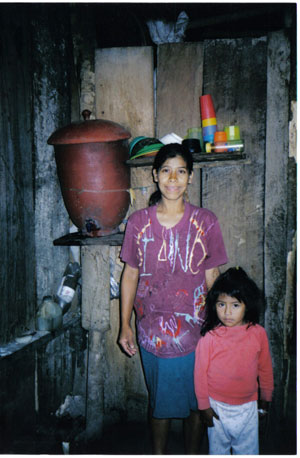
by Kali Friedmann
The Smithsonian Cooper-Hewitt “Design for the Other 90%” exhibit has arrived at RedLine Gallery in downtown Denver, showcasing products designed explicitly to fit the needs and circumstances of the world’s poorest customers – the “other 90%” who are bypassed by current design processes.
The exhibit, organized in part by International Development Enterprises (iDE), showcases products from an array of designers, engineers, and organizations focused on development, including Design Revolution (D-REV), the non-profit technology incubator co-founded by Paul Polak. D-REV is an outgrowth of Dr. Polak’s vision of fomenting a revolution in how companies design, price, market, and distribute their products, to produce radically affordable income-generating technologies for customers living on less than $4 a day.
Products like D-REV’s Jaipur Knee (a simple prosthetic knee that costs $25 to make and retails for $80) and low-cost ceramic water filters from IDE and other organizations, help illustrate the types of technologies that – at the right price and combined with appropriate mechanisms for marketing and distribution – have the potential to leverage the power of the market to reach large-scale impact.
JAIPUR KNEE
True to RedLine’s mission of merging art, education, and community, these low cost technologies are displayed throughout the gallery along with the creative responses of seven local artists to poverty, waste, and the challenges of design for development. One such work, created by RedLine resident artist Viviane Le Courtois, emphasizes the disparity between the bottom 90% of the world’s citizens in dire need of practical design solutions, and the top 10% who are served by the majority of designers and live surrounded by excess. The product of several weeks of work, many gallons of Elmer’s glue, and the waste from a covey of Le Courtois’ friends, it is a round thatched-roof hut made entirely of shredded junk mail.
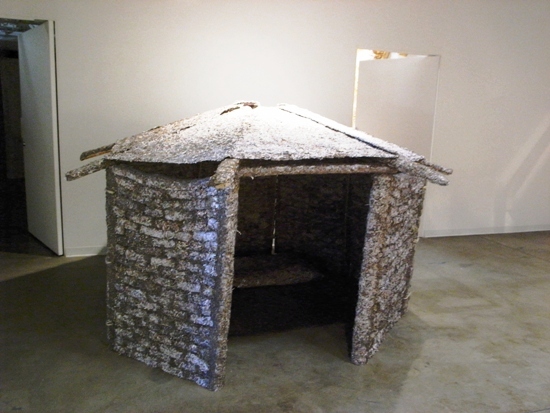
On the exhibit’s opening day, reporter Ryan Warner from the Colorado Public Radio program Colorado Matters met Dr. Polak at the gallery for a walk-through interview (listen to it here). True to form, Dr. Polak provided both a clear description of the design process required to create meaningful and effective tools for development, and an honest critique of the difficulties inherent in doing so.
Dr. Polak highlighted the importance of talking to customers and building not only radical affordability into design – a primary and thoroughly non-negotiable requirement – but also taking into account the much less obvious cultural and lifestyle factors of the communities being served. Failure to take into account details about social structure, cultural preferences, and the subtleties of life at the local level often results in the failure of the project as a whole. As an outsider, this requires a deep cultural understanding that can only be attained by spending time on the ground listening to the needs of users early on in the design process. A full explanation of Dr. Polak’s 12 Steps for Practical Problem Solving this can be found in his book, Out of Poverty, but the first three are crucial, and, while they seem obvious, are often overlooked:
1. Go to where the action is.
2. Talk to the people who have the problem and listen to what they say.
3. Learn everything you can about the problem’s specific context.
Cases where these steps were not followed abound. For example, there’s the Q Drum — a doughnut-shaped water transportation vessel that can be rolled to and from a water source with a rope tied through the center. Sounds great, looks cool, but, 1) at more than $70 per unit it’s too expensive for poor customers, and there’s no way for it to pay for itself, 2) the ropes tend to wear out quickly, and it’s unusable without a way to pull it, and, 3) the opening in the container is too large, making the water vulnerable to contamination from hands reaching inside or dirt finding its way in (80% of the contamination of bad water occurs during transportation between source and end-user). These sorts of problems can only be understood and solved by designing for affordability, spending time on the ground with users, doing a lot of listening, and continually iterating in response to feedback.
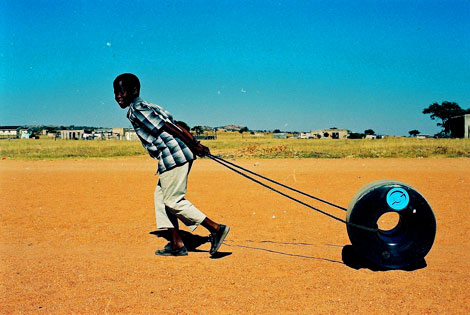
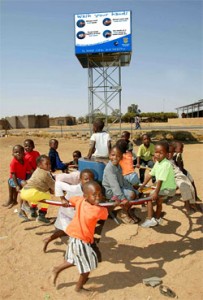
Developing countries are littered with well-intentioned but eventually useless products ostensibly designed with poor people in mind, but without their consultation or true knowledge of their needs. A classic example in this category is the PlayPump, a product that is not part of the Cooper Hewitt exhibit. Designed like a manual merry-go-round, as children run and spin on it the device pumps water into a storage tank for later use. Harnessing the power of children at play to pump water for the village conjures up a lovely image of a type that often appeals to Western donors. As a result the project (run by PlayPumps International) received tremendous press coverage and raised over $60 million dollars to build 4,000 pumps in villages in Southern Africa.
Yet in just a few months it became clear that the project was an abject failure. In the absence of expertise or funding for maintenance of the devices, technical malfunctions were never resolved, and water ceased to flow.
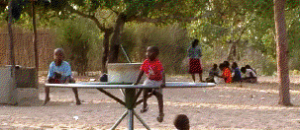
After a period of initial excitement, children for the most part lost interest and stopped using the toy, leaving women to spin the PlayPump themselves. Imagine a seventy-year-old woman, after a full day’s work, having to single-handedly spin this large toy that replaced her simple hand-pump just to get the water she and her family need. It’s this type of problem, rooted in the failure to connect with the customer, which designers working for the bottom 90% must avoid by beginning the design process on the ground, listening to the people for whom the product is being created.
By contrast, the treadle pump created by IDE has proven to have a higher output of water than the work put into it. As a result of that efficiency, of its low cost (around $25), and an effective marketing and distribution system involving troubadours singing its praises and local artisans making and selling them, over 3 million units have been sold throughout the developing world, helping many millions of people increase their incomes by cultivating higher-value, off-season fruits and vegetables. It’s affordable, reliable, leads directly to increased income (and pays for itself several times in the first year), and it’s so efficient it allows men, women, and children alike to pump water without breaking a sweat.

Which brings me to my one and only point of contention with Mr. Warner: I was witness to the fact that at age seventy seven, Dr. Polak was able to consistently and almost effortlessly operate the treadle pump and simultaneously talk about it without skipping a beat, much less “appearing out of breath.”
The Cooper-Hewitt Design for the Other 90% exhibit will be at RedLine through Sunday, September 25th, 2011. RedLine is located at 2350 Arapahoe Street in downtown Denver.
Click here for the full interview with Paul Polak that aired on Colorado Matters Wednesday, July 13, 2011.
If you have read this far why not Follow Us on Twitter @OutofPoverty?
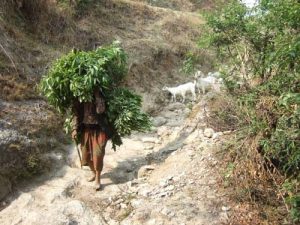
I love the water wheel that’s funny. We are so spoiled and blind to how other people have to life.